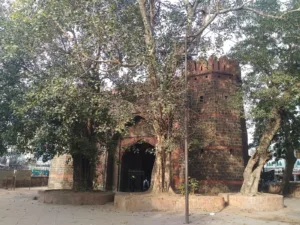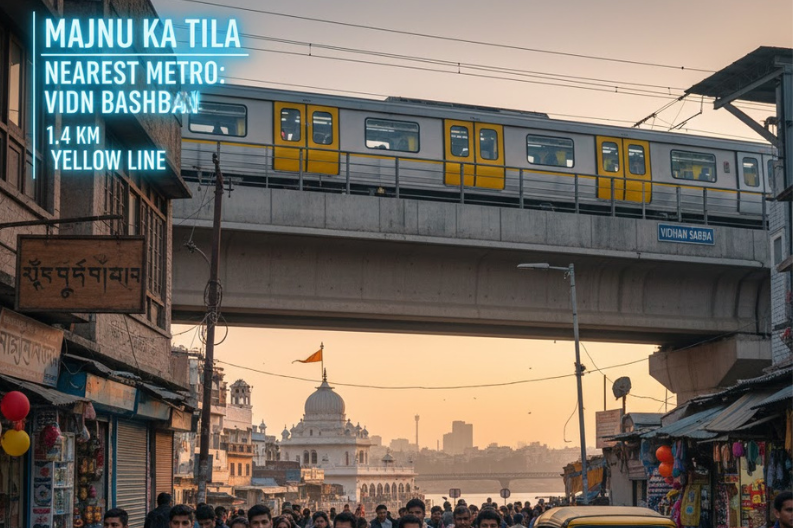Delhi is a city rich in history, rich food, and vibrant culture. There’s so much to discover here, from ancient monuments to bustling markets. One place that showcases this vibrant mix is Ajmeri Gate in Delhi.
This article will take you on a journey to not only understand Ajmeri Gate better but also explore the top 10 places you can visit near this historical marvel.
What is Ajmeri Gate?
Ajmeri Gate was built in the 17th century as part of a larger walled city known as Shahjahanabad. It was named Ajmeri Gate because it faces Ajmer, a city in Rajasthan. Even today, amidst all the city’s hustle and bustle, the gate stands firm, a symbol of Delhi’s rich history.

The Story Behind Ajmeri Gate
Every part of Delhi tells a story, and Ajmeri Gate is no exception. It represents an era where powerful emperors ruled, and magnificent cities were built. Although it is not as highly maintained as other historical structures, it still attracts many who wish to glimpse the city’s past.
Constructed in 1644, Ajmeri Gate is located to the southwest of Shahjahanabad. It served as one of the key entrances to this grand city established by the Mughal Emperor Shah Jahan. The gate gets its name from the road through it, which leads to the city of Ajmer in Rajasthan.
Ajmeri Gate holds special significance as it was one of the battlefields of the Sepoy Mutiny in 1857. This war marked a significant chapter in India’s struggle for independence, making Ajmeri Gate not just an architectural monument but also a symbol of resilience.
The Architectural Splendor of Ajmeri Gate
Ajmeri Gate presents the architectural finesse of the Mughal era. The gate possesses a square plan and features high-arched openings, a characteristic trait of Mughal architecture.
Despite the passage of centuries, Ajmeri Gate maintains its grandeur, bearing witness to the magnificent city that once sprawled beyond it. Today, a beautiful park surrounds Ajmeri Gate, augmenting its aesthetic appeal while providing a quiet respite amidst the bustling city.
Madrasa Ghaziuddin Khan Near Ajmeri Gate
Just west of Ajmeri Gate, one can find Madrasa Ghaziuddin Khan, a key historical structure. Nawab Ghaziuddin Bahadur, the father of the first Nizam of Hyderabad, established this educational institution in 1811.
The premises also host the founder’s tomb and a mosque, adding to the historical significance of the location. The madrasa later transitioned into Delhi College, and it was one of the constituent colleges of Delhi University.
Although the college has moved to a new location, the Anglo Arabic Senior Secondary School currently operates in the old building, thus keeping the educational legacy alive.
Beneath the Surface – Safdarjung’s Underground Apartments
Once beyond the gate, one could have observed the remains of underground apartments believed to belong to Safdarjung, a significant figure in the history of Delhi.
At one point, these underground recesses were one of the prime attractions of the city, inviting history enthusiasts to peel back the layers of time.
The Evolution of Ajmeri Gate
Time has woven drastic changes around Ajmeri Gate. The once sprawling fort walls have given way to commercial buildings and residential complexes, reflecting the natural evolution of a city.
However, the gate on the west still exists, standing as a silent sentinel overlooking the changes. While modernization has altered the original surroundings of Ajmeri Gate, the gate itself remains a constant, bridging the gap between the city’s past and present.
10 Best Places to Visit Near Ajmeri Gate Delhi
Now that you know a bit about Ajmeri Gate let’s look at the ten best places you can visit around this area. Each offers a unique experience and showcases a different aspect of Delhi’s culture and history.
1. Jama Masjid
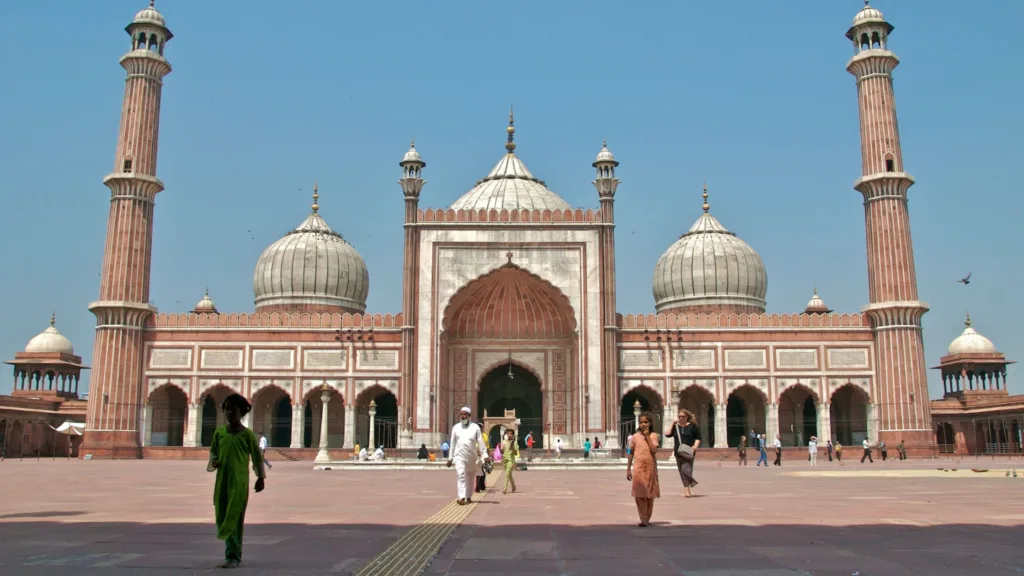
The Jama Masjid is a must-visit. Built during the Mughal era, this mosque is considered among the largest in India. The grandeur of its architecture and the tranquility it offers amidst the city’s chaos is something you should definitely experience.
2. Red Fort
Just a short drive from Ajmeri Gate is the Red Fort. Also built during the Mughal reign, it showcases splendid architecture. Here, you can spend time exploring the fort’s complex or watch the impressive light and sound show in the evenings.
3. Chandni Chowk
Chandni Chowk is not only one of the oldest but also the busiest markets in Delhi. Filled with small shops and food stalls, it offers an experience like no other. From delicious street food to gorgeous clothing and jewelry, there is a lot to explore here.
4. Raj Ghat
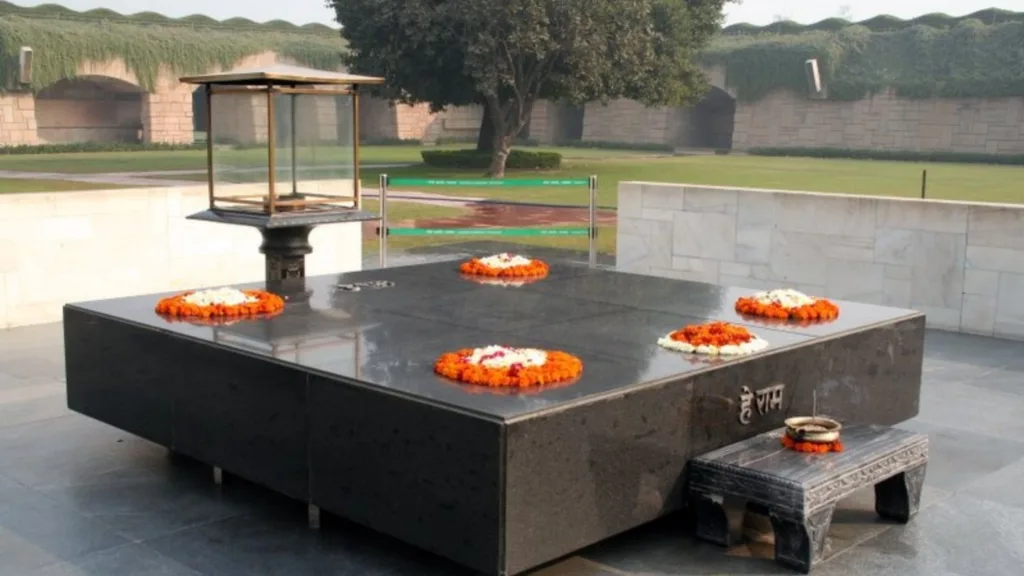
Raj Ghat is a memorial dedicated to the father of the nation, Mahatma Gandhi. This serene spot hosts a black marble platform marking the spot of Gandhi’s cremation. Visiting Raj Ghat gives you a chance to pay respects to one of India’s greatest leaders.
5. National Gandhi Museum
Walking a bit further from Raj Ghat, you will find the National Gandhi Museum. It is filled with pictures, sculptures, and other items related to Mahatma Gandhi. The museum gives you an in-depth look into the life and teachings of Gandhi.
6. Spice Market Khari Baoli
If you love spices, a visit to Khari Baoli is a must. Known as Asia’s biggest spice market, it offers a wide selection of spices, nuts, herbs, and teas. Here, the air is filled with the aroma of spices, and the bustling vendors add to its unique charm.
7. Feroz Shah Kotla Fort
Feroz Shah Kotla Fort is another historical structure near Ajmeri Gate. It is well-known for its well-preserved ruins and Ashokan Pillar. Walking along the fort’s old paths will take you back in time.
8. Digambar Jain Lal Mandir
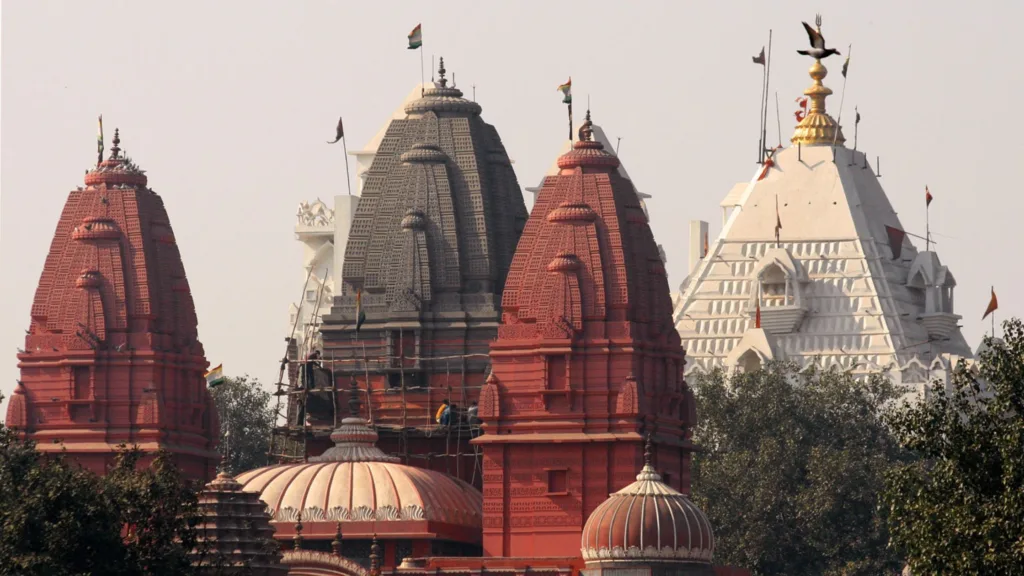
Located opposite the Red Fort, Digambar Jain Lal Mandir is the oldest Jain temple in Delhi. It is recognized by its red color and golden spires. Here, the calming chants and peaceful ambiance offer a chance to relax and reflect.
9. Meena Bazaar
Another vibrant marketplace near Ajmeri Gate is Meena Bazaar. This market is best known for clothing, specifically sarees. Ranging from reasonably priced goods to high-end garments, this market offers a shopping experience catered to all wallets.
10. Shri Digambar Jain Lal Mandir Bird Hospital
In the same premises as Digambar Jain Lal Mandir, you can find a unique Bird Hospital. It only treats birds, staying true to Jainism’s principle of non-violence. It’s a rare sight that is worth a visit.
Preserving Ajmeri Gate: A Collective Responsibility
Keeping Ajmeri Gate safe is very important. It is up to us and the government to help. Even small steps like not throwing trash can help protect it for everyone in the future.
Ajmeri Gate is more than just an old building. It holds a lot of history and connects the past to the present. It is big, important, and has many stories to tell. In fact, it is a great place for anyone interested in Delhi’s history.
From playing a role in an important rebellion to being part of Delhi’s schools, Ajmeri Gate is a special place that reminds us of Delhi’s rich past.
Final Note
As we said earlier, Ajmeri Gate Delhi is more than just a historical structure, it’s a link to the past. Likewise, the places around it each have their unique charm. Whether it is the historical Red Fort, bustling Chandni Chowk, or tranquil Raj Ghat, there’s something for everyone.
So, next time you are in Delhi, plan a day exploring Ajmeri Gate and the many wonders around it. Relish the history, soak up the culture, and create memories that will last a lifetime.

